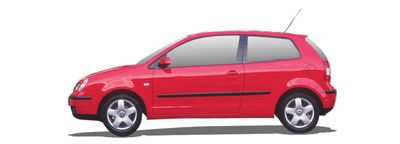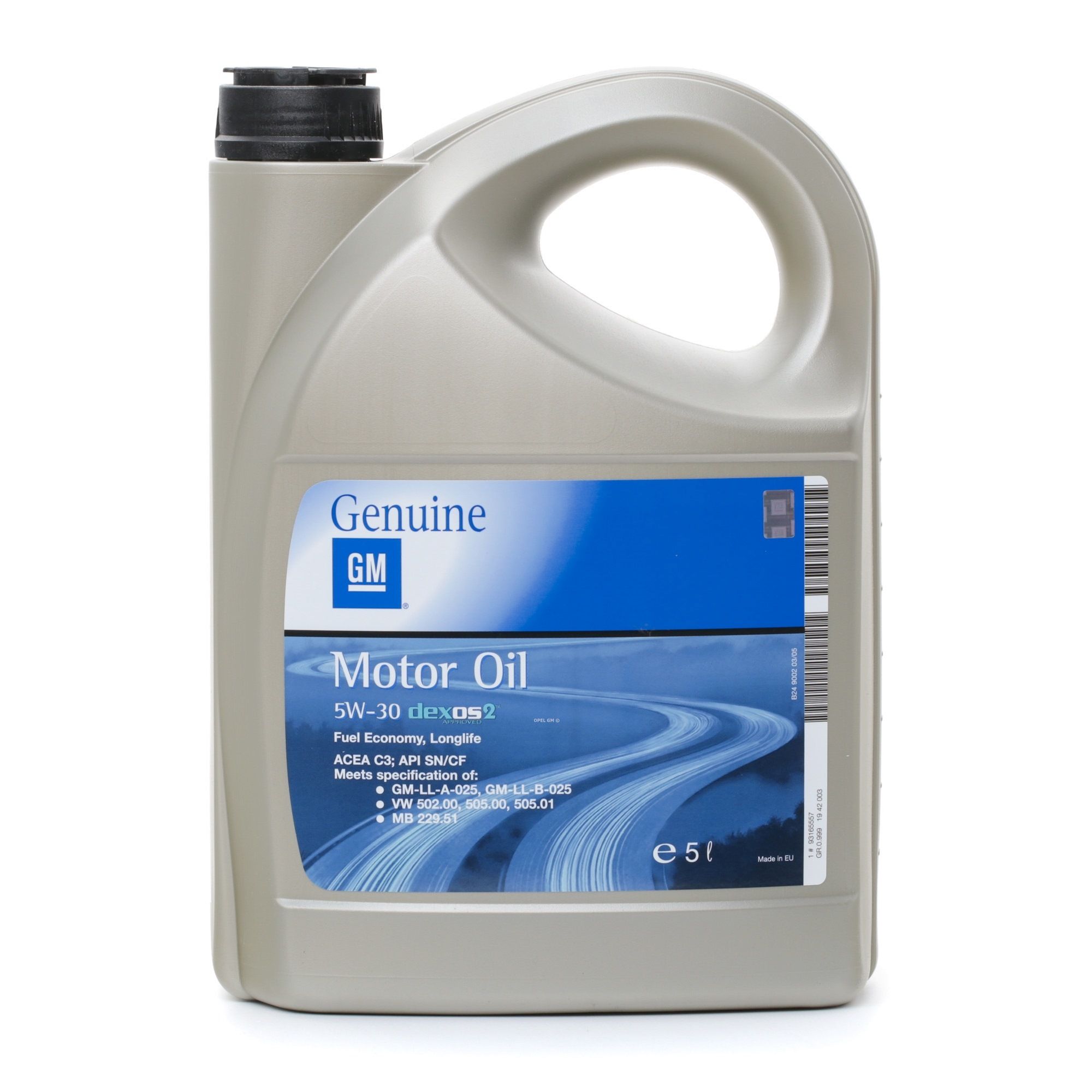Table of Contents
VW Polo engines
Since its introduction in 1975, the VW Polo has developed into one of the most successful small cars, offering an impressive range of VW Polo engines over six generations. Each generation has brought new technologies and different strengths and weaknesses, with technological evolution ranging from simple naturally aspirated engines to modern turbocharged engines with mild hybrid technology.

VW Polo engines: Historic generations I-III (1975-2001)

The first three VW Polo generations shaped the small car class for over 26 years and established the Polo as a reliable and economical city runabout. These historic VW Polo engines were characterized by their robust construction and easy maintenance, easily reaching 250,000 to 350,000 kilometers with proper care. The first generation (1975-1981) started with air-cooled engines, the second generation (1981-1994) introduced water-cooled units, while the third generation (1994-2001) already offered modern injection technology. Major engine damage was rare with these VW Polo engines, with only the water pump and timing belt requiring regular maintenance every 60,000-80,000 kilometers. The absolute highlight was the 1.6 GTI with 125 hp from the third generation, which combined sporty driving performance with proven reliability.
VW Polo gasoline engines: Historic generations I-III (1975-2001)
The VW Polo petrol engine range comprised a variety of engines over the three generations. The first generation was dominated by air-cooled units such as the 0.9-liter engine with 40 hp and the 1.1-liter with 50 hp. The second generation brought water-cooled engines from 1.0 to 1.3 liters with 45-75 hp. The breakthrough came with the third generation: here, the 1.4-liter engine with 60-75 hp established itself as the most reliable engine of all three generations. The VW Polo 1.4 MPI with 75 hp in particular proved to be virtually indestructible and economical. The sporty VW Polo GTI with a 1.6-liter engine and 125 hp was less common, but technically mature and offered an excellent combination of performance and reliability.
VW Polo diesel engines: Historic generations I-III (1975-2001)
Diesel engines were still a rarity in the first VW Polo generations. The first VW Polo Diesel came in 1986 with a 1.3-liter engine and 45 hp. This was later followed by 1.7-liter units with 57-64 hp and finally the modern 1.9 TDI with 90-110 hp in the third generation. These early VW Polo TDI engines were considered to be very robust and economical, but suffered from typical diesel problems such as loud running noises and sluggish throttle response. The VW Polo 1.9 TDI with 90 hp developed into the best diesel of these eras - it offered a fuel consumption of only 4.5-5.0 liters per 100 km and regularly achieved mileages of over 400,000 kilometers.
| VW Polo engine | Power output | Fuel consumption | Typical weaknesses | Rating |
|---|---|---|---|---|
| 0.9-1.1 air-cooled | 40-50 HP | 7.0-8.5 l/100km | Heating weak, loud | Average |
| 1.0-1.3 water-cooled | 45-75 HP | 6.5-7.5 l/100km | Timing belt, water pump | Good |
| 1.4 MPI | 60-75 HP | 6.0-7.0 l/100km | Very robust | Very good |
| 1.6 GTI | 125 HP | 7.5-8.5 l/100km | Sporty, but robust | Very good |
| 1.3-1.7 diesel | 45-64 HP | 5.0-6.0 l/100km | Loud, sluggish | Average |
| 1.9 TDI | 90-110 HP | 4.5-5.0 l/100km | Very economical and robust | Very good |

VW Polo engines: Generation IV (2001-2009)

The fourth VW Polo generation marked the transition to modern engine technology and for the first time offered a wide range of gasoline and diesel engines with improved efficiency. These VW Polo engines typically reached 200,000 to 300,000 kilometers with proper maintenance, with the 1.2-liter gasoline and 1.4 TDI diesel engines being considered particularly durable. Major repairs were usually due between 120,000 and 180,000 kilometers, mainly for the timing belt, water pump and injection system. The absolute top engine of this generation was the 1.4 TDI with 75 hp, which perfectly combined economy, reliability and sufficient power. Technical highlights were the introduction of FSI direct petrol injection and more modern common-rail diesel technology, which made the VW Polo competitive with the Ford Fiesta and Opel Corsa.
VW Polo petrol engines: Generation IV (2001-2009)
The VW Polo petrol engine range comprised engines from 1.2 to 1.8 liters displacement. The entry-level engine was a 1.2-liter three-cylinder with 54 hp, followed by the tried-and-tested 1.4-liter engine with 75 hp. For sporty drivers, there was the 1.4 16V with 100 hp and the VW Polo GTI with 1.8 turbo and 150 hp. The VW Polo 1.2 proved to be the most reliable petrol engine of this generation - simple in design, low-maintenance and very economical. The FSI engines with direct injection (1.4 FSI with 86 hp) were technically interesting, but were prone to coking of the intake valves. The VW Polo GTI 1.8T was powerful, but susceptible to turbocharger damage and increased oil consumption during sporty driving.
VW Polo diesel engines: Generation IV (2001-2009)
The VW Polo diesels were dominated by the 1.4 TDI with various power levels from 70 to 80 hp. There was also the smaller 1.2 TDI with 61 hp and the more powerful 1.9 TDI with 101 hp. The VW Polo 1.4 TDI with 75 hp developed into the public's favorite - it offered a test consumption of only 4.2-4.8 liters per 100 km, was very reliable and had sufficient power for everyday use. These VW Polo TDI engines had modern pump-nozzle injection and already met the Euro 4 standard. Problems occurred mainly with the injection system, which required maintenance every 150,000-200,000 kilometers.
| VW Polo engine | Power output | Fuel consumption | Typical weaknesses | Rating |
|---|---|---|---|---|
| 1.2 three-cylinder | 54 HP | 5.8-6.5 l/100km | Very robust and economical | Very good |
| 1.4 MPI | 75 HP | 6.2-7.0 l/100km | Proven and reliable | Very good |
| 1,4 16V | 100 HP | 6.8-7.5 l/100km | Occasional water pump | Good |
| 1.4 FSI | 86 HP | 6.0-6.8 l/100km | Valve coking | Average |
| 1.8 GTI Turbo | 150 HP | 7.5-8.5 l/100km | Turbocharger, oil consumption | Moderate |
| 1.2 TDI | 61 HP | 4.0-4.5 l/100km | Little power | Average |
| 1.4 TDI | 70-80 HP | 4.2-4.8 l/100km | Very economical and robust | Very good |
| 1.9 TDI | 101 HP | 4.8-5.5 l/100km | Fuel injection system | Good |

VW Polo engines: Generation V (2009-2017)

The fifth VW Polo generation brought a revolution in engine technology and introduced TSI turbo engines to the small car class for the first time. These VW Polo engines typically reached 180,000 to 280,000 kilometers with proper maintenance, with the smaller 1.2-liter units considered more reliable than the powerful TSI variants. Critical repair intervals were between 100,000 and 150,000 kilometers, mainly for the timing chain, turbocharger and high-pressure pump. The absolute highlight was the 1.2 TSI with 105 PS, which was very reliable despite turbocharging and offered an excellent balance between performance and consumption. Technical innovations such as cylinder deactivation in the 1.4 TSI ACT and modern common-rail diesel positioned the VW Polo as a technological pioneer against competitors such as the Peugeot 208 and Renault Clio.
VW Polo petrol engines: Generation V (2009-2017)
The VW Polo petrol engine range was dominated by TSI turbo engines. The entry-level model was a 1.2-liter naturally aspirated engine with 60 PS, followed by the 1.2 TSI with 90 and 105 PS. More power was provided by the 1.4 TSI with 122, 140 and 180 PS (GTI). The VW Polo 1.2 TSI with 105 PS proved to be the best petrol engine of this generation - it combined the power of a larger engine with the fuel consumption of a small car and was surprisingly reliable for an early TSI engine. The 180 hp VW Polo GTI was powerful, but suffered from typical EA111 problems such as timing chain stretching and occasional turbocharger damage. The 1.4 TSI ACT with cylinder deactivation was technically interesting, but complex and prone to software problems.
VW Polo diesel engines: Generation V (2009-2017)
The VW Polo diesels included the tried-and-tested 1.2 TDI with 75 PS and the more modern 1.4 TDI with 90 PS. The 1.6 TDI with 90 and 105 PS was added later. The VW Polo 1.2 TDI with 75 hp remained the king of economy with a fuel consumption of only 3.8-4.3 liters per 100 km and high reliability. These VW Polo TDI engines featured modern common-rail technology and met the Euro 5 standard. The 1.6 TDI was more powerful, but also more complex and more prone to problems with exhaust gas recirculation and the particulate filter.
| VW Polo engine | Power output | Fuel consumption | Typical weaknesses | Rating |
|---|---|---|---|---|
| 1.2 MPI | 60 HP | 5.5-6.2 l/100km | Little power, but robust | Good |
| 1.2 TSI | 90-105 HP | 4.8-5.5 l/100km | Surprisingly reliable | Very good |
| 1.4 TSI | 122-140 HP | 5.2-6.0 l/100km | Occasional timing chain | Good |
| 1.4 TSI ACT | 140 HP | 4.7-5.4 l/100km | Cylinder deactivation complex | Average |
| 1.8 GTI TSI | 180 HP | 6.0-7.0 l/100km | Timing chain, turbocharger | Moderate |
| 1.2 TDI | 75 HP | 3.8-4.3 l/100km | Very economical and robust | Very good |
| 1.4 TDI | 90 HP | 4.0-4.5 l/100km | Solid technology | Good |
| 1.6 TDI | 90-105 HP | 4.2-4.8 l/100km | EGR, particulate filter | Average |

VW Polo engines: Generation VI (2017-today)

The current VW Polo generation relies on state-of-the-art engine technology with a focus on efficiency and environmental compatibility. These VW Polo engines are expected to reach 200,000 to 300,000 kilometers with proper maintenance, with the newer 1.0 TSI engines being considered very reliable. Major maintenance work is typically due between 120,000 and 180,000 kilometers, mainly on the timing chain and turbocharger. The absolute top engine of this generation is the 1.0 TSI with 95 PS, which offers a perfect balance between performance, consumption and reliability. Technical highlights include Miller Cycle technology in the 1.5 TSI and mild hybrid systems from 2023. Diesel engines have been greatly reduced as VW focuses on petrol engines and electrification, positioning the VW Polo in competition with the Ford Fiesta and Hyundai i20.
VW Polo petrol engines: Generation VI (2017-today)
The VW Polo petrol engine range focuses on TSI turbo engines. The entry-level model is the 1.0 MPI with 65 and 80 PS without turbocharger. Above this are the 1.0 TSI engines with 95, 110 and 115 PS and the powerful 1.5 TSI with 150 PS. The VW Polo GTI received a 2.0 TSI with 200 PS. The VW Polo 1.0 TSI with 95 PS became the public's favorite - it offers sufficient power for everyday use, a fuel consumption of only 4.8-5.5 liters per 100 km and is considered very reliable. The powerful variants such as the 1.5 TSI occasionally have problems with cylinder deactivation, while the VW Polo GTI 2.0 TSI is susceptible to the well-known EA888 weaknesses.
VW Polo diesel engines: Generation VI (2017-today)
The VW Polo diesel range was greatly reduced. Only the 1.6 TDI with 80 and 95 PS was still available, but this was discontinued in 2021. These last VW Polo TDI engines met the Euro 6d standard and offered a fuel consumption of 3.9-4.4 liters per 100 km. They were considered reliable, but suffered from the complex exhaust technology with SCR catalytic converter and particulate filter.
VW Polo mild hybrid: Generation VI (2017-today)
VW introduced the first mild hybrid systems in the VW Polo from 2023. The 1.0 eTSI with 95 PS combines the proven TSI engine with 48-volt technology and offers improved efficiency with the same reliability.
| VW Polo engine | Power output | Fuel consumption | Typical weaknesses | Rating |
|---|---|---|---|---|
| 1.0 MPI | 65-80 HP | 5.0-5.8 l/100km | Little power, but robust | Good |
| 1.0 TSI | 95-115 HP | 4.8-5.5 l/100km | Very reliable | Very good |
| 1.5 TSI | 150 HP | 5.2-6.0 l/100km | Cylinder deactivation | Good |
| 2.0 TSI GTI | 200 HP | 6.2-7.0 l/100km | EA888 problems | Moderate |
| 1.6 TDI | 80-95 HP | 3.9-4.4 l/100km | Complex exhaust technology | Average |
| 1.0 eTSI | 95 HP | 4.5-5.2 l/100km | New technology | Good |

Conclusion: The best VW Polo engines of all generations
The development of VW Polo engines shows a clear trend towards increased efficiency and complexity. While the early naturally aspirated engines impressed with their simplicity and robustness, modern TSI units offer significantly more power with lower fuel consumption. Diesel engines were particularly influential in the middle generations, but lost importance due to stricter emissions regulations and electrification trends.
- Best VW Polo gasoline engine:
The VW Polo 1.0 TSI with 95 PS (Generation VI) combines modern turbo technology with excellent reliability and low fuel consumption - ideal for most drivers.
- Best VW Polo diesel engine:
The VW Polo 1.4 TDI with 75 PS (Generation IV) offers the best combination of economy, reliability and everyday usability across all generations.
- Best VW Polo hybrid engine:
The VW Polo 1.0 eTSI with 95 hp (Generation VI) as the first mild hybrid shows promising approaches for the future of small car motorization.
For maintenance and spare parts for all VW Polo generations, AUTODOC offers a comprehensive range of original and quality spare parts with fast delivery and expert advice.















